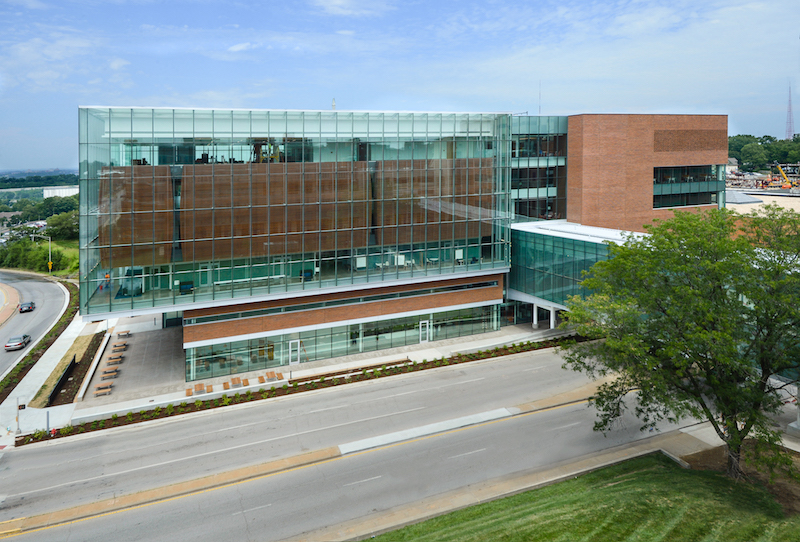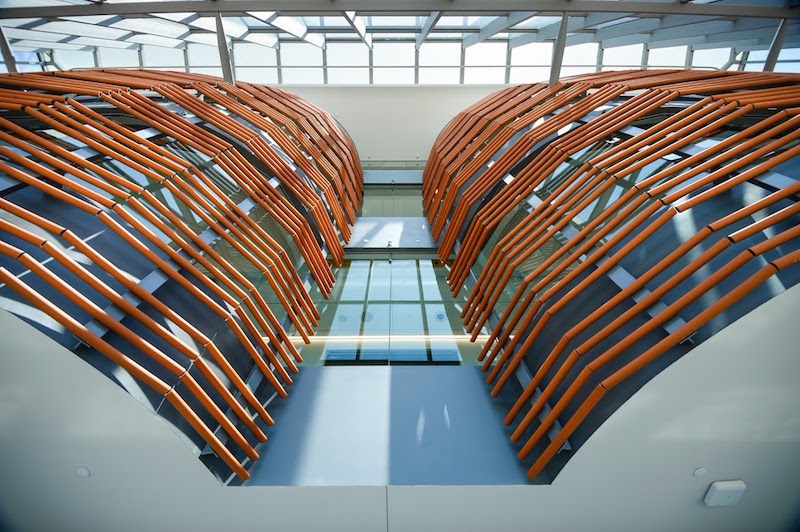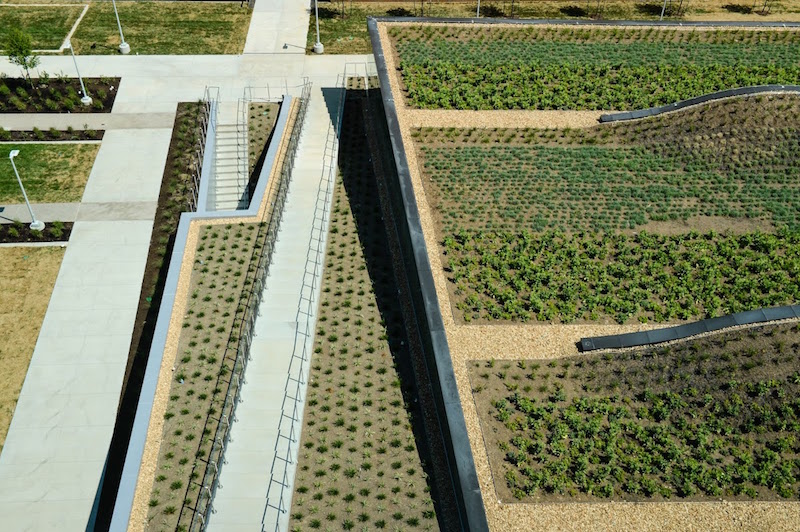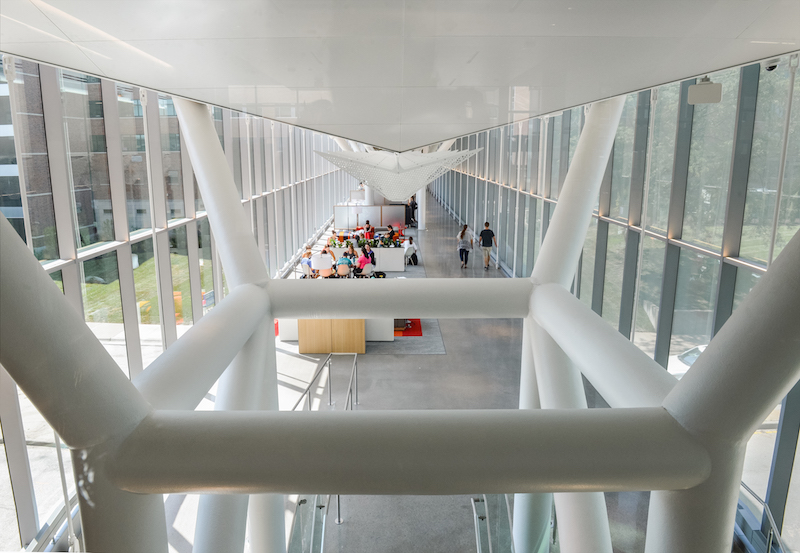Missouri isn’t the only state with a new medical center designed to address the shortage of healthcare professionals, as the University of Kansas Medical Center recently opened the Health Education Building with the same goal in mind.
The Health Education Building is a four-story, 171,000-sf building designed by Co Architects and Helix Architecture that includes high-tech simulation environments and flexible learning studios. Large-scale teaching studios and clinical skills and simulation labs support active, team-based learning.
 Photo courtesy of KUMC.
Photo courtesy of KUMC.
Two 225-person interactive studios are separated by an operable partition that can be removed to create one column-free 11,000-sf event space. The studios and labs “float” within the outer glass façade of the building to show off the core of the building’s curriculum to the public.
From the outside, the building’s design uses a transparent “lantern” box design. The ample use of glass allows students to receive natural daylight and provides them with exterior views.
The Health Education Building’s design also called for an on-grade parking lot to be changed into a 22,000-sf green courtyard and a 17,000-sf vegetated roof with access. The irrigation system for these features uses condensate water from the building’s mechanical system.
 Photo courtesy of KUMC.
Photo courtesy of KUMC.
A 250-foot-long glass-enclosed bridge passes through the center of the Health Education Building and connects it to existing buildings on the Kansas City campus. The bridge links the campus into a loop that provides 6,000 sf of lounge, meeting, and student activity space.
The Health Education Building was designed with flexibility in mind and can accommodate a 25% class size increase over its current enrollment.
 Photo courtesy of KUMC.
Photo courtesy of KUMC.
Related Stories
Engineers | Jun 14, 2023
The high cost of low maintenance
Walter P Moore’s Javier Balma, PhD, PE, SE, and Webb Wright, PE, identify the primary causes of engineering failures, define proactive versus reactive maintenance, recognize the reasons for deferred maintenance, and identify the financial and safety risks related to deferred maintenance.
Healthcare Facilities | Jun 5, 2023
Modernizing mental health care in emergency departments: Improving patient outcomes
In today’s mental health crisis, there is a widespread shortage of beds to handle certain populations. Patients may languish in the ED for hours or days before they can be linked to an appropriate inpatient program.
Healthcare Facilities | Jun 1, 2023
High-rise cancer center delivers new model for oncology care
Atlanta’s 17-story Winship Cancer Institute at Emory Midtown features two-story communities that organize cancer care into one-stop destinations. Designed by Skidmore, Owings & Merrill (SOM) and May Architecture, the facility includes comprehensive oncology facilities—including inpatient beds, surgical capacity, infusion treatment, outpatient clinics, diagnostic imaging, linear accelerators, and areas for wellness, rehabilitation, and clinical research.
Healthcare Facilities | May 19, 2023
A new behavioral health facility in California targets net zero energy
Shortly before Mental Health Awareness Month in May, development and construction firm Skanska announced the topping out of California’s first behavioral health facility—and the largest in the nation—to target net zero energy. Located in Redwood City, San Mateo County, Calif., the 77,610-sf Cordilleras Health System Replacement Project is slated for completion in late 2024.
3D Printing | May 12, 2023
World’s first 3D-printed medical center completed
3D construction printing reached new heights this week as the world’s first 3D-printed medical center was completed in Thailand.
Sustainability | May 11, 2023
Let's build toward a circular economy
Eric Corey Freed, Director of Sustainability, CannonDesign, discusses the values of well-designed, regenerative buildings.
Digital Twin | May 8, 2023
What AEC professionals should know about digital twins
A growing number of AEC firms and building owners are finding value in implementing digital twins to unify design, construction, and operational data.
Design Innovation Report | Apr 27, 2023
BD+C's 2023 Design Innovation Report
Building Design+Construction’s Design Innovation Report presents projects, spaces, and initiatives—and the AEC professionals behind them—that push the boundaries of building design. This year, we feature four novel projects and one building science innovation.
Sustainability | Apr 20, 2023
13 trends, technologies, and strategies to expect in 2023
Biophilic design, microgrids, and decarbonization—these are three of the trends, technologies, and strategies IMEG’s market and service leaders believe are poised to have a growing impact on the built environment.
Design Innovation Report | Apr 19, 2023
HDR uses artificial intelligence tools to help design a vital health clinic in India
Architects from HDR worked pro bono with iKure, a technology-centric healthcare provider, to build a healthcare clinic in rural India.

















